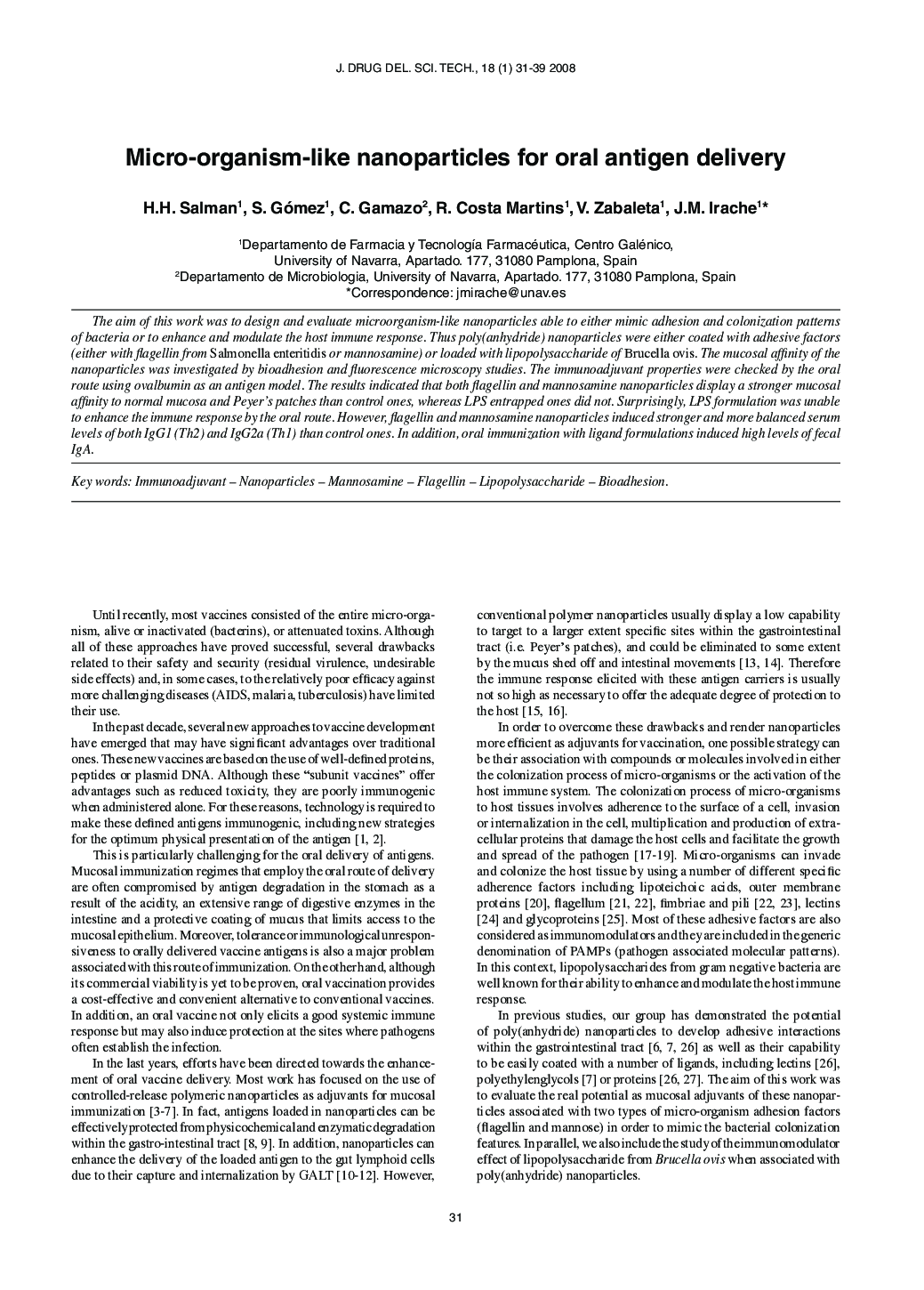| Article ID | Journal | Published Year | Pages | File Type |
|---|---|---|---|---|
| 2483956 | Journal of Drug Delivery Science and Technology | 2008 | 9 Pages |
The aim of this work was to design and evaluate microorganism-like nanoparticles able to either mimic adhesion and colonization patterns of bacteria or to enhance and modulate the host immune response. Thus poly(anhydride) nanoparticles were either coated with adhesive factors (either with flagellin from Salmonella enteritidis or mannosamine) or loaded with lipopolysaccharide of Brucella ovis. The mucosal affinity of the nanoparticles was investigated by bioadhesion and fluorescence microscopy studies. The immunoadjuvant properties were checked by the oral route using ovalbumin as an antigen model. The results indicated that both flagellin and mannosamine nanoparticles display a stronger mucosal affinity to normal mucosa and Peyer’s patches than control ones, whereas LPS entrapped ones did not. Surprisingly, LPS formulation was unable to enhance the immune response by the oral route. However, flagellin and mannosamine nanoparticles induced stronger and more balanced serum levels of both IgG1 (Th2) and IgG2a (Th1) than control ones. In addition, oral immunization with ligand formulations induced high levels of fecal IgA.
